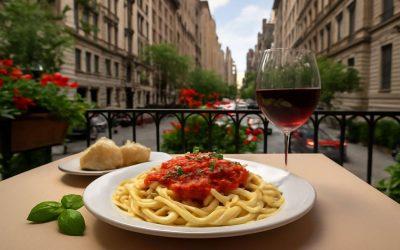
Known around the world for its incredible pasta, creamy risottos and wood-fired pizzas, italian food has a rich history of family traditions and regional favourites. Learn how to cook authentic italian recipes, with traditional flavours and textures, at home.
The heart of Italian cuisine lies in a handful of ingredients that are used in various ways to create the many classic dishes. Salt, pepper and garlic are commonplace, as is an intensely flavoured olive oil. Vegetables are a must, whether they are fresh from the garden or bought ready-prepared, and you’d be hard-pressed to find an Italian without a good wedge of parmesan cheese nearby. And then there are the preserved meats, like salami and sausage, and fish – both fresh and canned in oil, such as sardines and anchovys.
As with so much in Italy, it’s about the balance of ingredients and a willingness to experiment with new combinations. “Traditional Italian flavors are so intense that a little goes a long way,” says Bastianich, who owns Felidia, Becco and Esca restaurants in New York and co-hosts the PBS series Lidia’s Italy in America. “A spoonful of water or wine, a pinch of salt, a grinding of pepper, a dash of chilli, a teaspoon of sugar or lemon juice: they all go in.”
Italians are also a nation of home cooks and are very proud of their meals, even if that means serving pasta with a store-bought sauce, or using tinned tomatoes. They are very aware of the importance of using high-quality ingredients and prefer to shop at local markets, where they can see what’s freshest and most seasonal.
The traditional meal consists of antipasti, a plate of appetizers to be shared (think grilled vegetables, olives and cured meats) followed by the primo piatto -usually a pasta dish, but sometimes soup or risotto –and then contorni, or side dishes, like sauteed mushrooms, grilled zucchini and mashed potatoes. Dinner is finished with a fruit bowl or sorbet and a dolce, often a tiramisu.
Throughout the centuries, the cuisine of Italy has been influenced by other cultures as people moved in search of work and adventure. From the Middle East and Far East to Europe and the New World, other cultures have contributed their spices, cooking skills and ingredients to Italian cuisine. Today, that diversity is reflected in the vast array of delicious italian recipes.


0 Comments